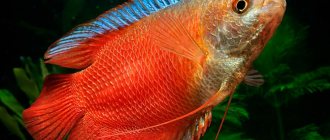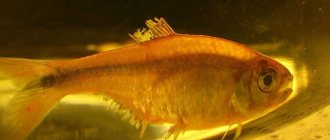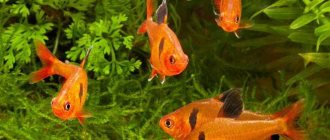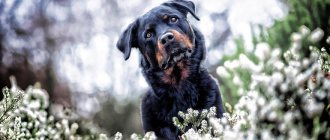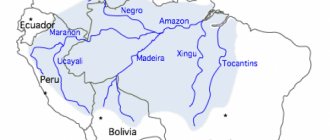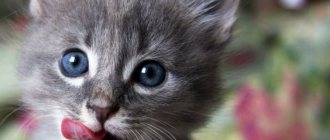- Wild animals
- >>
- Birds
black grouse bird from early childhood. This animal has more than once become the main character of fairy tales, narratives and children's stories. In many works, the authors show black grouse as smart, quick-witted, but is he really like that? The black grouse is undoubtedly one of the most interesting representatives of the bird class. It’s worth learning more about it.
Origin of the species and description
Photo: Teterev
The black grouse is one of the most beloved birds among the people. He is valued for his tender childhood memories of numerous fairy tales, for his bright and memorable appearance, and is especially valuable among hunters. The black grouse is called differently: “kosach”, “grouse”, “black grouse”, “field grouse”. In Latin, the name of the bird sounds like Lyrurus tetrix. Basically, the names come from two factors: characteristic appearance and behavioral characteristics.
Video: Grouse
Kosach belongs to the order Galliformes, the pheasant family. This is a widespread bird that prefers to live in forest and forest-steppe zones. It is quite easy to recognize such an animal. The black grouse has a large build, a short neck and a small head. Some adults can grow more than one meter in length. Plumage depends on gender. Males are shiny black with a tint and red eyebrows, females are reddish-brown with stripes of three colors: gray, dark yellow, brown (closer to black).
Interesting fact: In many languages, the name “grouse” is translated as “chicken”. And this is not at all surprising. The habits of this animal largely coincide with the habits of an ordinary domestic chicken.
There are different subspecies of black grouse.
To date, there is no exact data on their number, but most scientists identify seven:
- tetrix baikalensis;
- tetrix tetrix;
- tetrix tschusii;
- tetrix viridanus;
- tetrix mongolicus;
- tetrix britannicus;
- tetrix ussuriensis.
The subspecies have different habitats and some external differences. When determining a subspecies, external features are taken into account more. Thus, the main criteria are recognized: the degree of distribution of white feathers among the flight feathers and tail feathers, the size of the “mirror” on the wings of males, the nature of the pattern on the throat of the animal.
How to choose and cook a carcass correctly
It is useful to remember that the meat of an old bird is less tasty and tougher than the fillet of young grouse. To understand at least the approximate age of a bird, you need to take a close look at its paws and check the flexibility of the chest bones. The sharper the claws and the more flexible the bones, the younger the bird. And the hunters noticed another feature: the female’s meat is always more tender than that of the male. An unpleasant odor emanating from the carcass indicates that the product is not fresh.
Grouse can be recognized by the color of the meat on the breast: it should be darker on top (dark cherry) and soft pink inside. If the black grouse carcass is a hunting trophy, and not a “cultivated” bird, then its meat must contain some amount of lead shot. Therefore, before cooking, the damaged part must be cut out.
Black grouse meat belongs to dietary products. Properly cooked fillet is tender, juicy, tasty, pleasant pale pink in color, somewhat reminiscent of hazel grouse meat. Many European restaurants include a variety of dishes from this bird in their menus. And for the French, this bird is a traditional holiday dish for Christmas and New Year. By the way, in Bashkir cuisine, grouse meat is also national pride.
When cutting up a carcass, many people throw away the giblets of grouse, but the heart and liver of this bird are very tasty, for example, fried in oil with a slice of black bread.
It usually takes about 45 minutes to prepare grouse. If the bird is not young, then it will take longer to boil, stew, fry or bake it. It’s even better to follow the advice of famous chefs: fry and bake young carcasses, and boil or stew more mature ones.
But it is not advisable to immediately remove boiled meat from the liquid in which it was cooked. Ideally, the grouse should cool in a vessel with broth. This will make the game bird fillet more tender and juicy. It is better to stew this bird with wine - it will turn out tastier. You can bake or fry either the whole carcass or just the legs of the bird - you get an original alternative to chicken meat.
In many European restaurants you can order grouse puree soup, made from fillet and ground beans. Based on poultry meat and its offal, excellent meat soups are obtained that even beginners in cooking can prepare. Black grouse were no less popular in the cuisine of our ancestors. In Rus', cooked grouse was considered a festive dish.
And one more secret. The taste characteristics of grouse largely depend on the season when the bird was caught. Autumn grouse are considered the most delicious. By this time, they feed mainly on berries (usually lingonberries, blueberries, cranberries, blackberries and others), which impart a special aroma and flavor to the meat. In winter, when the birds' diet consists of pine needles and buds, the taste of the fillet also takes on a slight pine note.
Appearance and features
Photo: Black grouse bird
The black grouse can be called a fairly large representative of its family. The average length of a male is fifty-eight centimeters, a female is forty-five centimeters. However, this is far from a chapel. In nature, there were much larger individuals - more than one meter in length. The weight is also not small - about 1.4 kg. It is easy to recognize a female and a male. Firstly, the male is always larger in size and weight, and secondly, the animals differ in the color of their feathers.
Interesting fact: Black grouse are in many ways similar to other representatives of Galliformes. However, there are striking differences. Thus, in these birds the metatarsus and nostrils are fully feathered, and in most subspecies the bases of the fingers are feathered.
The males of this species of birds have a brighter and more memorable appearance. They are easily recognized by their black plumage with a green or purple tint. Also distinctive features of black grouse are bright red eyebrows, white undertail and brown belly. A characteristic feature of males is the presence of a “mirror” on their flight feathers. It is a white spot and occupies most of the wing.
Females are not distinguished by their expressive appearance. The color of their feathers is reddish-brown. The entire body has pronounced transverse stripes of brown, black or gray. Many people confuse female black grouse with female capercaillie. However, the female black grouse has “mirrors” on the wings and a white undertail.
Male and female black grouse have different vocal sounds. The female's voice is similar to the voice of the most ordinary chicken. She makes sounds very similar to “ko-ko-ko”. Males mutter for a longer period of time and are distinguished by a loud, ringing voice. In case of danger, males shout “chu-ishsh”. However, it is not often possible to hear grouse. They are most “talkative” only during the mating period.
Distribution and habitats
This species belongs to the pheasant family and lives mainly in the forest, forest-steppe and partly steppe zones of Europe and Asia. Black grouse can often be found in the steppe zone, because it does not only need closed areas. Found in places such as:
- North Korea;
- Central Europe;
- North Africa;
- Scandinavian countries;
- China;
- Scotland;
- Mongolia.
Birds are quite common in our country.
It is also important to talk about lifestyle, namely: is the black grouse a migratory bird or not? No, this is a sedentary species. And during the nesting period, it builds dwellings in open places, avoiding gloomy areas with tall trees.
Another important and interesting distinguishing feature is that it is a wintering bird. In winter, her life changes. At this time, she prefers to sit in the trees, and with the onset of darkness she takes refuge under the snow, making a deep tunnel in the snowdrifts. And during severe frosts, it practically does not leave its shelter, with the exception of going out to feed for a couple of hours.
Where does the black grouse live?
Photo: Male grouse
Black grouse are very common birds. The largest number of such birds can be found in Europe and Asia. In these areas the population is always unstable. This is due to changes in the landscape and the availability of suitable food. If in the north and south of Europe black grouse live in forest and forest-steppe zones, then in the west and center they prefer to settle in forests located in the mountains. Despite the high population, black grouse have completely disappeared in some areas of Europe. This happened due to climate change and active human farming.
In Asia, such birds can be found in some areas of North Korea, China, Mongolia, and Kazakhstan. This bird is very widespread throughout Russia. It can be found in almost every city, with rare exceptions. Also, separate populations of black grouse live in Ukraine, choosing places with thickets near swamps and large rivers. You cannot find such birds on Sakhalin, Crimea and Kamchatka.
Interesting fact: Black grouse is a sedentary bird. However, sometimes they carry out mass relocations. Large flocks of birds move simultaneously, usually not very far from their original habitat. Such mass migrations are associated only with the lack of food.
When choosing a place to live, the black grouse is guided by several factors: the availability of a sufficient amount of food, a suitable climate. They are ideally suited to temperate climates and areas where forested areas are located next to open spaces. Flocks of animals prefer to live in groves, woodlands, mountains, in the valleys of large rivers or near agricultural lands, where you can always find something to eat. These birds avoid dark forests and look for places where birch trees grow in large numbers.
Now you know where the black grouse lives. Let's see what he eats.
What goes with it?
Bird meat, as a rule, goes well with wild berry sauces. And the black grouse is no exception. If we take into account that the hunting season for this bird is autumn and winter, then the berries are also taken in autumn. Most often it is blackberry. Its sweet and sour taste perfectly complements the aroma and taste of grouse meat. No less winning combinations are grouse meat and cranberry or lingonberry sauce. Garlic, wine, cream or cheese sauce can also be an excellent addition. Broccoli, pumpkin, corn and other vegetables are served as a side dish for cooked grouse. Nuts, lemons, asparagus and mushrooms can be used as a filling for stuffing a young carcass. Well, what gourmet would refuse black grouse fried with nuts or stewed in champagne with cream! These ingredients also perfectly highlight all the flavor benefits of poultry meat.
Best materials of the month
- Coronaviruses: SARS-CoV-2 (COVID-19)
- Antibiotics for the prevention and treatment of COVID-19: how effective are they?
- The most common "office" diseases
- Does vodka kill coronavirus?
- How to stay alive on our roads?
Braised grouse
Place 2 bay leaves, 3 cloves, a little cinnamon, onion cut into rings and a few slices of bacon on the bottom of the mold. Cut the black grouse carcass into portions and place in a mold. Sprinkle spices on top and pour a bottle of red wine. The form is sent to the oven and the meat is baked for 4-5 hours over very low heat. Cool the finished dish and place it in the refrigerator along with the mold overnight. Serve cold.
Many people refuse game meat because they don’t know how to cook it properly or consider it tasteless. In fact, to make the wild bird fillet juicy and aromatic, you just need to follow some cooking rules. Although when it comes to grouse, there are almost no rules. But the taste of this meat is unsurpassed. However, so are the benefits from it.
More fresh and relevant information about health on our Telegram channel. Subscribe: https://t.me/foodandhealthru
We will be grateful if you use the buttons:
What does the black grouse eat?
Photo: Teterev in Russia
Most of the grouse's diet consists of plant foods. The diversity of the bird menu differs only in spring and summer, when there are a lot of fresh berries, fruits, and plants on the street.
In the warm season, the diet includes:
- seeds of trees, herbs, plants;
- inflorescences, flowers and buds;
- leaves of some shrubby and herbaceous plants;
- fresh berries: cranberries, blueberries, blueberries, lingonberries;
- grains of agricultural crops: wheat, millet.
Eating grains of wheat, millet, and black grouse cause harm to agricultural land and vegetable gardens. However, these animals cannot be called big pests. Black grouse rarely eat grains, preferring berries, leaves and other food. In winter, the diet of these birds is more meager. They do not fly to warm countries, so they are forced to look for food under thick snow, in trees. In winter, black grouse eat buds, shoots, and catkins of trees. They love birch, willow, aspen, and alder. The diet must include juniper berries and pine cones.
Interesting fact: To improve the quality of their digestion, adults swallow small pebbles while eating. They help food to grind better in the stomach and facilitate the digestion process.
The diet of black grouse offspring differs significantly. In the first days of their life, small chicks urgently need food rich in proteins. For this reason, animal food predominates in their daily diet. The chicks eat cicadas, bugs, spiders, mosquitoes, caterpillars and other various insects that their parents bring to them. Having matured, black grouse's need for animal food gradually decreases and then completely disappears.
Wintering and feeding of black grouse
The sedentary lifestyle of black grouse and grouse forces them to adapt to survival in the cold season. If you observe the behavior of these birds in winter, their passion for birch groves becomes clear - birch “earrings” are the favorite delicacy of black grouse and the basis for their survival in times of famine. A variety of shrub berries, which hide under the snow and retain their nutritional properties, are also a good addition to the diet.
The second condition necessary for successful winter survival is deep, fluffy snow. If the frosts are moderate, the flock spends almost the entire day in the trees, making, from time to time, short flights to feeding places. In the evening, having eaten well, they dive straight from the trees into snowdrifts, where they settle down for the night.
The sedentary lifestyle of black grouse and grouse forces them to adapt to survival in the cold season
Grouse living in highlands, where the winter diet is even more meager than on the plains, have their own ways of surviving. They have adapted to feed even on young pine needles and spruce seeds.
Features of character and lifestyle
Photo: Grouse in the forest
Black grouse can safely be called sedentary birds. They live in the same territory, choosing regions with a temperate climate. However, among these birds, moments of mass migrations rarely occur. They are not regular. It is rather a forced relocation. The main reason for such migrations is lack of food.
In lean years or climate change, birds simply do not have enough food. Then they move in whole flocks to another place where there is no such shortage. Quite rarely, the cause of mass migrations is fluctuations in the number of animals. The population of such birds sometimes increases sharply. This usually happens once every five to ten years.
Interesting fact: Black grouse have a very interesting way of escaping the cold during the winter season. These are the only birds that use snow “chambers” to keep warm. They dig small holes for themselves, where they hide during cold weather and snowfalls. Birds go outside only to search for food.
Black grouse live in thickets, forests, mountains, near a water source. They live in flocks. If there are a large number of birds, their place of settlement can be easily found by their loud muttering. Black grouse often make sounds, especially during the mating season. Only males mutter loudly, and females only occasionally support the song. These birds lead a predominantly terrestrial lifestyle. Birds climb trees only to search for food: berries, leaves, buds, cones. Black grouse spend the night only on the ground.
Interesting fact: Black grouse, despite their large build and great similarity to domestic chickens, are excellent “flyers”. These birds easily rise into the air from any surface. However, black grouse take off very noisily from the ground, and almost unnoticed from the trees.
Black grouse belong to sedentary individuals of the pheasant family.
2. The black grouse got its name because of its ability to make characteristic sounds similar to clucking.
3. From different languages, black grouse is translated as “quack”, “chicken”. Many of its habits are similar to ordinary poultry.
4. Black grouse lives almost everywhere: it inhabits the territory of Europe, North Africa, Asia, and lives in the Scandinavian countries. Black grouse live mainly in birch plantings, groves, and forests, however, some species also prefer mixed forests.
5. This bird spends a significant part of its life on the ground. However, in winter, black grouse almost everywhere feed on trees.
Female black grouse
6.Externally, individuals of different sexes are completely different from each other. The female is relatively small, weighing up to one kilogram and has a brown color with a reddish tint and black ripples. The tail is straight with white undertail. Often the black grouse can be confused with a wood grouse, however, in flight, when the female spreads her wings, it becomes possible to see the whitish underwings, which distinguishes her from other species of birds.
7. Birds of this species are careful and prudent, have excellent hearing and vision, and when danger approaches, they take off sharply and hide on the tops of trees.
8. Despite the squat lifestyle, in winter the black grouse climbs trees to feast on buds, birch catkins and other twig food.
9. In warmer periods, the basis of its diet consists of wild berries, willow and aspen buds, clover leaves, and rose hips.
10. Throughout their lives, along with their main food, adult birds swallow small pebbles, which promote active digestion and grinding of rough food inside the stomach.
Male grouse
11. The noble male grouse has large, bright red eyebrows and a strong beak, is colored predominantly black and shimmers with a blue or greenish tint. The widely spread lyre-shaped tail is separated by a white undertail. Mature individuals reach 58 centimeters and weigh up to 1.5 kilograms.
12. Despite its massiveness, the black grouse, in search of exquisite delicacies, is capable of grabbing a branch and hanging upside down for a long time, reaching for a berry or a young bud that catches its eye.
Caucasian black grouse
13. Black grouse prefer to settle in the forest-steppe or forest zone. They choose areas where there is open space and at the same time a lot of bushes. They are also sometimes found in extensive clearings or in the mountains.
14. Black grouse move quickly along the earth’s surface. When moving, these birds stretch their necks forward.
15. While the black grouse is sitting on a branch, its body is in a horizontal position.
16. Black grouse is the only bird that uses snow chambers as a shelter in the cold season. They hide in dug shallow holes from frost and bad weather, and come out only to eat.
17. The black grouse is a semi-sedentary bird, and from time to time it migrates. However, these migrations are seasonal and insignificant in terms of the distance traveled.
18. Sometimes black grouse make mass migrations. Such relocations are most likely associated with crop failure in the habitat.
19. During the nesting period, this bird prefers birch groves, which alternate with grain fields.
20. Black grouse often make nests in linden and aspen forests, especially if there are extensive clearings, sparse small forests or forest edges next to them. An indispensable condition for nesting in this case is the presence of berry patches and dry places.
21. Grouse are a social bird, they gather in small groups. In the spring, the mating period begins. Males use characteristic sounds and a peculiar dance to invite females for mating. Males are polygamous and have the opportunity to fertilize more than a dozen grouse.
22. These birds make a nest right on the ground, usually it is covered with a tree or bush. Sometimes a small hole in the soil serves as a nest.
23.The number of eggs in a clutch can vary from 4 to 14 pieces. The eggs are incubated exclusively by the female, and only she raises the offspring. The newly born chicks are covered with thick down.
24. A week after birth, grouse chicks can already flutter from one place to another. They follow their mother and are obedient. They begin to fly at the age of one month.
25. After birth, the chicks need to consume animal food, so the females initially feed them small insects and worms. As the chicks grow, they consume mainly food of plant origin.
26. Black grouse is capable of fast flight. Moreover, he does it with ease. When flying, birds often flap their wings (which, by the way, are strongly curved).
27. Black grouse easily takes off both from trees and from the earth’s surface. There is only one difference. A black grouse takes off from a tree almost silently. But this bird takes off from the ground quite loudly.
28. The female protects the chicks by diverting the attention of the predator to herself, she pretends to be wounded and takes him away from the brood, and at this time the chicks hide in shelters, scattering in different directions.
29. A brood of black grouse remains until autumn, and then the males leave it and join the flock of adults. Females stay with their mother.
30. The color of the plumage of young black grouse is similar to the color of females.
31. In winter, almost all birds of this species grow horny fringes on the sides of the toes, which increase the area of the paws and ensure easy movement in the snow.
32. Black grouse rally into flocks immediately after the breakup of broods. The flocks, which remain throughout the winter period, include both old individuals and young females and males of grouse.
Grouse - Kosach
33. It is typical for each flock of black grouse to remain in a certain territory until the food supply is depleted or a large amount of snow falls.
34. In general, with the onset of winter, birds switch to tree food, since ground food under a layer of deep snow becomes inaccessible. In view of this, black grouse can often be seen in winter sitting on tree branches.
35. The black grouse feels at ease in the trees, easily moving even along the thinnest branches, although the male bird can weigh up to one and a half kilograms.
Showing black grouse
36. Autumn mating is typical for black grouse. In terms of timing, it begins at the end of summer or beginning of autumn; intensive mating continues until the end of October. However, even in December-January you can hear the muttering of individual killer whales. Moreover, almost only old male grouse take part in autumn mating. Black grouse fly out to the current before sunrise; males stay on the ground. Black grouse display throughout the day.
37. An interesting fact is that young female black grouse begin to nest later than older ones.
38. If for whatever reason the first clutch of eggs died, then the female is able to lay a second clutch. This circumstance is the reason for the extended period when grouse eggs can be seen laid in nests.
39. If the frosts are very severe, then the birds spend most of the day in the snow. The black grouse's sleep under the snow is very sensitive; they hear all the sounds of the forest.
40.When a predator approaches, the black grouse quickly flies out from under the snow and climbs the tree. If the bird is very frightened, it can fly further, several kilometers. The black grouse flies well.
41. Black grouse is a game bird. This is facilitated by the widespread distribution of black grouse and the high number of these birds.
42.A wide variety of methods are used to catch black grouse. For example, in the autumn they hunt for stuffed animals. In winter, these birds find refuge. In the spring they hunt lekas, and in the summer, hunters also catch broods of black grouse. However, gun methods of hunting are not the only ones. Various traps are often used (and in the past this method was dominant).
Black grouse in snow chambers
43. Among the forest inhabitants that can pose a real danger to black grouse are foxes, hawks and martens.
44. During crop failure, these birds go to the fields to eat food, so grain crops treated with chemicals can also pose a threat to them, consuming which the birds instantly die.
45. Many people know that black grouse is the favorite prey of many hunters. Often these birds give themselves away by making “gurgling” sounds, thanks to which hunters find them.
46. An interesting fact is that the black grouse always escapes persecution only with the help of its wings (that is, it simply flies away). Flight never becomes a means of salvation.
47. In females and males of grouse, molting does not occur simultaneously. Immediately after the end of the current, molting begins in adult males. Its duration is very long and can exceed two and a half months in time - and its end often occurs in September or even October. As a rule, birds find relatively safe places for themselves during the molting period. Usually their role is played by dense thickets of bushes.
48. First of all, black grouse molt their small feathers. Then the turn comes to the tail and flight feathers. At the same time, single females begin to molt with the males.
49. Those females that have chicks molt along with their brood - in time, this occurs a month after the start of molting in males. Around September, female black grouse have completely finished molting.
50. Grouse in the wild lives about 8 - 14 years.
photo from the Internet
Social structure and reproduction
Photo: Pair of black grouse
The beginning of the mating season for black grouse is difficult to miss. They change radically in their behavior with the onset of the first heat. In spring, black grouse lead an active lifestyle, singing often and loudly. This period is called the beginning of the current. It usually occurs in the month of March. It is impossible to give an exact number, because different regions where grouse live have their own climatic and geographical features.
The process of reproduction of these animals can be represented in stages:
- active current. With the arrival of spring, male black grouse gather in large numbers at the edges of the forest, where they actively communicate with each other. Up to fifteen individuals can gather in one place. Active mating lasts about two weeks. At the same time, males may have clashes and even fights among themselves;
- fertilization of the female. After the males, the females also arrive at the mating site. There they can choose a partner for themselves. Next, the birds mate, and the males leave the females, because they are no longer needed;
- nest equipment. Females build their nests on the ground, not far from the mating area. A black grouse nest is a small hole where females place various twigs, grass, leaves, and feathers. Usually the nest is built in thickets of grass and nettles;
- laying and incubating eggs. Eggs are laid by females in the month of May. Black grouse are quite prolific. At one time, the female can lay up to thirteen eggs. The eggs are light ocher in color with spots. the female incubates the eggs for about twenty-five days;
- caring for chicks. The female also cares for the offspring independently. The chicks are under the supervision of their mother for about ten days. She protects her offspring from predators and other dangers. Chicks preferably eat animal food: various larvae, small insects, caterpillars.
Bird names
Scientific classification defines the Orca as Tetrao tetrix (formerly Lyrurus tetrix). This bird belongs to a number of chicken-like birds, the pheasant family. And among the people, the Kosach has a whole bunch of names, and very affectionate ones. Most often, birds are compared to black grouse. But unlike the latter, the mowers do not live in the thicket, but in fields, meadows, heathlands, forest edges or large forest clearings. That is why they are called field grouse.
The Kosach bird, however, is always careful and sensitive. It cannot be said about her that she is deaf, like a black grouse on a leash. Even in the midst of wedding ceremonies, the flock takes to the air as soon as it hears a suspicious sound. In Ukraine, these birds are called teteruks. In Russia, due to the fact that the killer whales do not live in the forest, but in open areas, they are given nicknames: polevik, polnik.
Since in the heat and at night the birds prefer to sit on the branches in a sparse birch forest, they are also called birch birds. In kosaki, like in many chicken-like animals, sexual dimorphism is developed. Therefore, the names of males and females are different. Cockerels are called blackies - for their charcoal, blue-tinged plumage color. And, of course, with braids, for the red eyebrows hanging over the eyes during the current. What is the name of a female black grouse? People affectionately call it pollyushka, marakushka, hazel grouse and killer whale.
Natural enemies of grouse
Photo: Teterev
The most dangerous period in the life of black grouse is the first ten days after birth. It is during this period that chicks often become victims of predators. They are attacked by foxes, wild boars, and martens. These predators can eat not only chicks, but also adults. Foxes are especially dangerous for adult black grouse. These animals can find birds even under the snow thanks to their keen sense of smell.
Many representatives of the mustelid family can also be called enemies. Sables are an ardent hunter of black grouse. They attack both adults and juveniles. Large feathered predators are also not averse to feasting on black grouse. It is the goshawks that are most dangerous for them. This predator hunts black grouse throughout the year.
Despite the presence of a large number of predators that attack black grouse, they do not have a significant impact on their population. To a greater extent, the decline in animal numbers is influenced by people themselves. Humans are a dangerous natural enemy for black grouse. Uncontrolled economic activity, deforestation, hunting - all this leads to a reduction in the total number of birds. In some countries, such factors have completely led to the disappearance of birds from their natural habitat.
Interesting information
The grouse population is quite extensive. They live in many regions and attract the interest of scientists and bird lovers. There are many interesting facts about these birds:
- The name of the black grouse is translated from different languages as “hen” or “cluck”.
- These birds are considered cautious birds. They don't let people near them.
- During the breeding season, males can fertilize up to ten females.
- When the clutch dies, the black grouse lays eggs again, but in half the size.
- The vocalizations of males and females are very different. Black grouse usually cackle, and their partners make ringing sounds.
- Sometimes birds grab branches with their paws and hang upside down to reach a bud or berry.
- Birds often eat small pebbles along with their food, which allow them to quickly digest rough food.
- Males do not take part in brooding or caring for the offspring.
- Birds are most active in the morning and evening.
- The Caucasian black grouse is listed in the Red Book of Russia. The decline in its population is associated with agricultural activities and poaching. Today, many birds of this species are protected by people on the territory of the Caucasus and Teberda nature reserves.
- The decline in the grouse population is often influenced by climatic conditions. During the summer rainy season, about 40% of the brood of birds die due to hypothermia.
- The bird is depicted on postage stamps of many countries.
Even in the distant past, people admired black grouse, which attracted them with their beautiful colors and unusual sound. However, their numbers may rapidly decrease due to hunting and climate change. People should make every effort to preserve this bird species.
Previous
The world around us Message about potatoes - description, origin and use
Next
The world around us Message about animals of the Arctic - description and signs of the inhabitants
Wedding ceremonies
Kosach is a polygamous bird. A male is capable of fertilizing several females. Steppe grouse do not form families. The male leaves immediately after fertilization, leaving his females to arrange the nest themselves, sit on the clutch and care for the offspring. But in order to achieve the favor of females, Kosachs are ready to engage in vocal feats and even battles.
At the end of winter and beginning of spring, wedding ceremonies begin. Before dawn, males gather in a lek - an open area surrounded by forest or tall bushes. There they begin to spin, squat and make various sounds that are simultaneously similar to grunting, muttering and sneezing. Sometimes the birds chase each other and even get into battles. But, unlike cockfights, fights between male oracles are nothing more than a trick designed to impress females hiding in the bushes.
Without inflicting the slightest scratch on each other, the opponents disperse in different directions. The females at first show feminine shyness, but then fly up to the gentlemen they like. They dance around in front of them, stamp their feet, stretch out their necks, fluff their tails and “chuff” loudly, gurgle and mutter.
Chicks
In the southern regions of its habitat, the first black grouse chicks appear already in mid-July. The chicks emerge from the egg very quickly.
It only takes a few hours to hatch the shell. The newly born black grouse chicks weigh no more than thirty grams. And what’s most interesting is that they immediately leave the nest.
The nomadic period for chicks and female black grouse lasts about a month. During this period, the diet includes, in addition to plant foods:
- small insects;
- larvae;
- worms
Young offspring, even after leaving their mother, are still attached to the same territory for some time.
Black grouse chicks have camouflage feathers.
